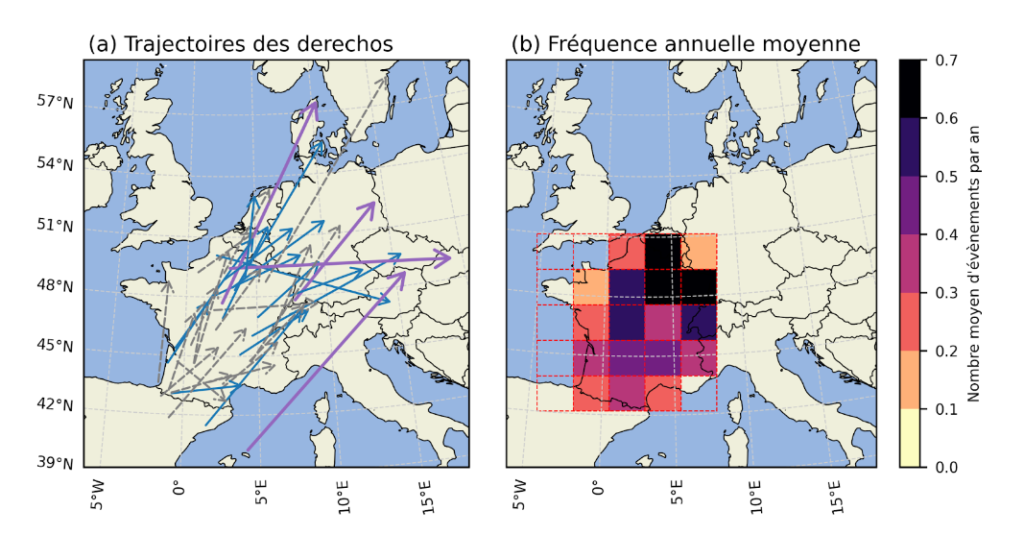SEVERE STORMS IN FRANCE HAVE ALREADY BEEN INTENSIFIED BY CLIMATE CHANGE
The paper is led by Lucas Fery (PhD student at LSCE-IPSL, CEA Saclay) and Davide Faranda (LSCE, IPSL-CNRS).
Reference: Fery L. and Faranda D.: “Analysing 23 years of warm-season derechos in France: a climatology and investigation of synoptic and environmental changes« , Weather Clim. Dynam., 5, 439-461, https://doi.org/10.5194/wcd-5-439-2024, 2024.
Severe thunderstorms, such as derechos, are less studied phenomena in Europe than in the USA. However, a recent event has highlighted the very real threat they can pose to Europeans. On the night of August 17-18, 2022, a line of thunderstorms formed near the Balearic Islands, moving rapidly northeastwards and affecting Corsica, Italy, Slovenia, Austria and then the Czech Republic in just 12 hours. Wind gusts of up to 225 km/h in Corsica caused the deaths of 12 people and injuries to 106 others, as well as extensive material damage.
A recent study has analyzed for the first time the occurrence of derechos in France, particularly during the « hot season » from May to September. Between 2000 and 2022, 38 events of this type were recorded, with an average frequency of 1.7 events per year, i.e. almost 5 events every 3 years. These storms affect almost the entire French territory, but their frequency is higher in the north-east and east of the country, with events also frequently affecting Switzerland, the Benelux countries and Germany. This study thus contributes to a better characterization of the risk associated with these extreme weather events in France and Europe.
The study also explores the relationship between derechos and climate change. The authors observe an increase in atmospheric instability in the recent period, leading to a potential intensification of thunderstorms. This increase is linked to two components: on the one hand, an increase in heat and humidity in the lower layers of the atmosphere, an effect of greenhouse gas emissions of anthropogenic origin but which can also be influenced by natural variability; on the other hand, a change in wind patterns, which is mainly due to natural climate variability.
This study is therefore a first step towards understanding the role of climate change in the intensification of convective phenomena in Europe. This field of research could benefit in particular from the help of artificial intelligence in understanding and emulating derechos.

Figure 1(a) Approximate tracks of warm-season derechos that affected France between 2000 and 2022. The tracks are depicted by straight arrows between the first and last severe wind gust reports. The thin broken grey lines, thin blue lines and thick purple lines respectively represent low-, moderate- and high-intensity derechos. (b) Heatmap of the yearly frequency of warm-season derechos computed for geographical cells of dimensions 200 km × 200 km.

